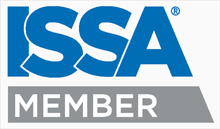How to Strip Floors with Heavy Wax Build Up
Floors are being stripped less often, so when it comes time to strip, build ups of 20 or more coats is not out of the question. Floor Stripping is a labor intensive task, with that in mind, we offer some guidance on what type of stripper to select when you have heavy buildups on floors.
What can Go Wrong?
Stripping Floors is So Much Fun! We love to do it over and over again.
When stripping heavy build-ups, the correct stripper can save tons of time and labor $. Nothing is more frustrating than having to strip multiple times to get to the bare floor.
A “Sticky and Gummy” Mess!
When Stripping Heavy Build-ups, stripper solutions can get sticky and gummy. The gummy solution quickly clogs up stripper pads, costing more time and money $$$ in supplies. This mess can be avoided by selecting the correct stripper.
So What Type of Stripper is Needed for Heavy Build Ups?
You get what you pay for OR Don’t be penny wise and Dollar Foolish
The cost for a 1 gallon or 5 gallon container of stripper are all over the board. While cost is an important factor, remember the real cost of stripping a floor is in the time, labor, and materials required to strip the floor.
Look for a Highly Active “Super” Stripper
Floor Strippers are now available that contain substantially higher levels of active ingredients to help penetrate multiple coats. The new class of super strippers will typically have more than 50% active ingredients.
These super strippers contain a synergistic blend of powerful solvents, usually a solvent called “butyl” or 2-Butoxyethanol and another solvent called Benzyl Alcohol. This synergistic blend works superior compared to each solvent by itself. The Benzyl Alcohol is effective, yet low odor, so the overall odor of the stripper is relatively low.
The super strippers are cold water strippers, so using cold water keeps solvent odors at a minimum.
Look for a Stripper that does NOT contain Caustic Alkalis
Some strippers use inexpensive caustic raw materials to boost strength of their strippers. The problem is the offending caustic compound called Sodium Hydroxide tends to coagulate the stripped finish solution during the removal of heavy build ups. The result is that gummy sticky mess. You can find Sodium Hydroxide on a Safety Data Sheet for the stripper you are using or check the Technical Data Sheet for the pH of the stripper. Anything over 12.5+ indicates the presence of a caustic compound like Sodium Hydroxide.
Strippers that indicate that floors does not have to be neutralized or rinsed after stripping usually indicate that the stripper does not contain Sodium Hydroxide or other caustics.
Stay Cool! Hot Water doesn’t help
Back in the day, custodial technicians were training to use warm to hot water when diluting strippers. Chemists have developed modern strippers containing solvents that help penetrate the layers of finish more quickly. Using hot water will simply cause the solvents to evaporate into the air, leaving less solvent on the floor to do the work. Plus hot water will create odors!
WAIT: Let it Work!
Don’t be too quick to apply and scrub. It is counterproductive. After applying a generous solution of stripper, give the stripper a minimum of 10 minutes to penetrate all the coats of wax or finish.
Follow these steps:
- Mix stripper at the desired ratio with cold water. The ratio will depend on the level of build up on the floor. TIP: Never use a stripper straight out of the container, water actually helps activate the stripper and keep the solution from drying out on the floor.
- Use a clean cotton mop to apply stripper generously to the floor surface, don’t wring out the mop when applying the stripper. Each diluted gallon of stripper will cover approximately 75-100 sq. ft. TIP: If areas appear to be drying out or absorbing all the stripper, add more stripper solution to the area.
- Wait at least 5 minutes, then start agitating along edges with a scrub pad sometimes referred to as a “Doodlebug”.
- When edges have been completed, begin scrubbing the floor with a black, high productivity pad. These pads are a very aggressive, open weave construction designed specifically for stripping.
- Pick up stripper solution with a wet dry vacuum. TIP: An automatic scrubber can be used to scrub and pick up the stripper solution. When using a scrubber, a brush is better than a pad, but always dispense water or neutral cleaner from the scrubber when picking up the stripper solution. Be sure to empty the scrubber when done.
- Make sure all finish has been removed, any remaining finish should be re-stripped. TIP: A big mistake is leaving softened finish on the floor and coating over with new finish. All old finish must be removed and the floor fully rinsed.
- Flood rinse the floor with water. use a mop bucket with water and a CLEAN cotton mop, generously apply the solution to the floor, then pick up with a wet dry vacuum. This operation can also be quickly completed with an autoscrubber.
- Final damp mop rinse: A final rinse can be done with a clean mop and water or a dilute solution of neutral cleaner. This final rinse can also be completed with an autoscrubber with water or neutral cleaner solution in the tank.
- Allow to dry, the floor is now ready for finish.
Multi-Clean Firestorm Super Stripper for Heavy Build Ups
For more information, visit our floor care webpage



